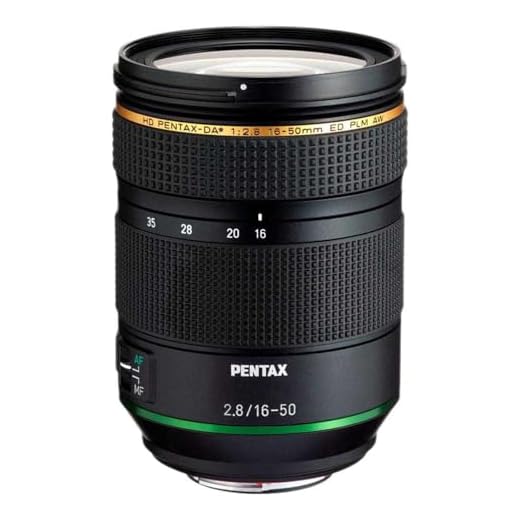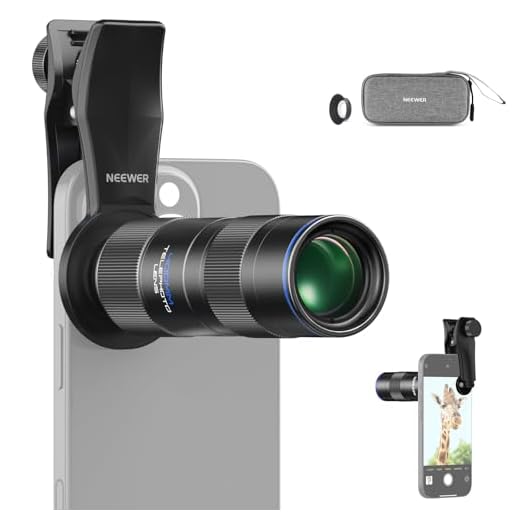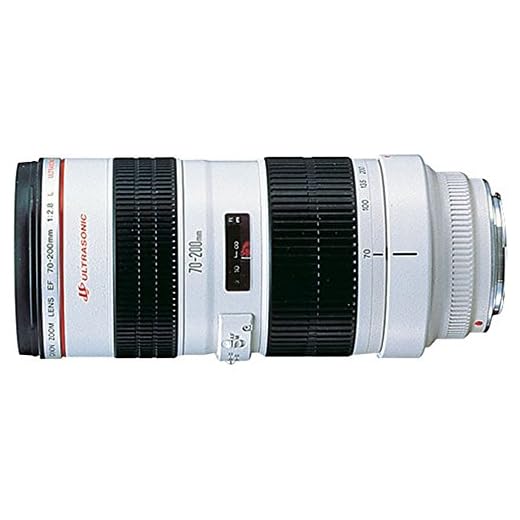



Two standout options I recommend are the 24-70mm f/2.8 and the 70-200mm f/2.8. These options provide versatility for capturing various scenes, from sweeping vistas to distant wildlife. The constant aperture allows for great low-light performance, which is beneficial during Alaska’s long twilight hours.
This article is designed for anyone eager to document their Alaskan experience in stunning detail. Whether you’re an amateur photographer or a seasoned shooter, you’ll find insights tailored to enhance your skills while exploring this breathtaking region.
Through this guide, I’ll highlight several remarkable optics that cater to different photographic styles, focusing on their capabilities, advantages, and ideal situations for use. Expect detailed information that will help you make an informed choice when preparing for your photographic expedition.
Best Camera Gear for an Alaskan Adventure
One of the most rewarding aspects of an Alaskan getaway is capturing its breathtaking beauty. A versatile zoom option can be indispensable, allowing for quick framing of both distant wildlife and stunning fjords. This adaptability ensures I can seize fleeting moments without missing a beat.
In addition to the zoom, a quality prime option is invaluable for low-light scenarios–whether it’s for the ethereal glow of the Northern Lights or cozy lodge interiors. This type of lens often provides a wider aperture, enhancing clarity and detail, which can be crucial in dimmer settings.
Key Considerations
Before packing, I consider the following factors:
- Weather Resistance: Conditions can shift dramatically; I prioritize gear that withstands rain and cold.
- Weight: Lightweight options help reduce fatigue during long hikes; I prefer compact sets.
- Focal Length Range: A mix allows me to easily adapt to various scenes, from sweeping vistas to intimate wildlife shots.
- Image Stabilization: Beneficial when capturing on-the-move subjects or when I’m working in challenging environmental conditions.
Choosing the right equipment significantly impacts the experience, ensuring every beautiful moment is documented with the quality it deserves. Rather than overpacking, I select items that truly enhance my photographic adventure and fit well into my lifestyle.
Wide-Angle Options for Stunning Views
Utilizing wide-angle options can transform my captures of vast vistas into breathtaking compositions. These tools provide an ability to include more of the scene in a single frame, which is particularly effective in expansive terrains filled with mountains, lakes, and forests. I find that this feature can create a sense of depth, drawing the viewer into the image with a unique perspective.
When I explore, choosing the right focal length is key. A shorter focal length allows me to emphasize foreground elements while maintaining a wide view of the background. This technique works wonders when photographing towering peaks or intricate ice formations. By positioning myself closer to interesting foreground subjects, I can create dynamic images that lead the eye through the entire photograph.
Creative Uses of Wide Fields
To enhance my visual storytelling, I often consider the following techniques:
- Foreground Interest: Placing a prominent subject close to the lens, such as wildflowers or a rock formation, can add layers to the scene.
- Leading Lines: Utilizing natural lines, such as winding paths or rivers, helps guide the viewer’s gaze through the photograph.
- Layering Elements: Incorporating various planes, from the foreground to distant mountains, adds depth and dimension.
Exploring different angles and perspectives is another vital aspect. By changing my shooting position, I am often able to discover unconventional views. Climbing a rock or finding a higher vantage point can yield entirely different interpretations of the same scene.
Utilizing wide angles effectively isn’t just about capturing what’s in front of me; it’s about conveying a sense of place and experience. By experimenting with foreshortening and perspective, I can create images that resonate emotionally with viewers, inviting them to share in the awe I feel when witnessing these incredible sights.
Telephoto Options to Capture Wildlife from Afar
Choosing the right optical equipment can significantly enhance your wildlife photography experience. A telephoto option is crucial for observing and snapping images of animals in their natural habitat without disturbing them.
When exploring the wilderness, you’ll want a lens that offers impressive magnification while maintaining clarity and detail. Look for something with a longer focal length, typically over 200mm, to effectively frame distant subjects like bears, moose, or eagles. Stability is also a key aspect; consider lenses that incorporate optical stabilization technology to counteract camera shake during handheld shots.
Considerations for Wildlife Photography
In addition to focal length and stabilization, pay attention to the aperture. A wider aperture can enhance performance in low light, allowing you to capture stunning images during the golden hour or in cloudy conditions. Quick autofocus capabilities are equally important, as wildlife can often change direction unexpectedly.
- Magnification: Longer focal lengths help in framing distant subjects.
- Stabilization: Optical stabilization assists in reducing shake.
- Aperture: Wider apertures improve low-light performance.
- Autofocus: Fast autofocus is essential for capturing moving animals.
Additionally, using a tripod or monopod can provide stability and allow for longer shooting sessions without fatigue. Consider investing in a sturdy, portable support system to maximize your photography potential.
Macro Lenses for Detailed Close-Ups of Flora
I recommend using macro optics to capture exquisite details of the plant life you’ll encounter. These specialized devices allow for remarkable proximity to your subjects, revealing textures and colors that are often overlooked. From delicate petals to intricate leaf patterns, the clarity and sharpness brought by macro optics will elevate the overall quality of your photographs.
The benefits of utilizing macro optics are evident, especially when exploring areas rich in diverse flora. These tools enable me to create stunning close-ups that showcase the beauty of tiny ecosystems. Adjusting your settings to focus effectively on the details can result in breathtaking and vivid imagery.
Key Features to Consider
- Focal Length: Choose a focal length that complements your shooting style. A longer focal length allows for greater working distance, giving you more flexibility to capture shots without disturbing the environment.
- Magnification Ratio: Opt for devices that offer a 1:1 magnification ratio. This ensures that the subject appears life-sized in your captures, helping you render fine detail accurately.
- Aperture: A wide maximum aperture can improve low-light performance and allow for better control over depth of field, enabling beautiful background blurring while highlighting your primary subject.
Experimenting with different techniques can yield unique results. Consider incorporating natural light, using reflectors to enhance shadows, or experimenting with various backgrounds to make your flora-centric photography truly captivating. By focusing on the intricate details, I’m able to convey the charm of nature in my work.
As you prepare for your expedition, remember to pack your macro optics thoughtfully. A sturdy tripod can also ensure stability, especially in low-light conditions, allowing for longer exposure times without compromising image sharpness. Embrace the beauty of the small and let your creativity blossom.
All-in-One Zoom Lenses for Versatile Shooting
During my expedition to the remote regions, I found that an adaptable zoom optic serves multiple purposes, making it a perfect companion for capturing the breathtaking sights. This type of optic allows for seamless transitions between diverse subjects, from towering mountains to the intricate details of wildlife.
Opting for a versatile zoom enables a lightweight experience, reducing the need to constantly switch equipment. I appreciated being able to manage everything from expansive scenes to close-ups with just one unit while hiking through the rugged terrains.
Benefits of All-in-One Zooms
- Flexibility: The ability to zoom in and out allows me to quickly respond to changing scenes and subjects.
- Convenience: Carrying fewer attachments simplifies my travel, making hiking and moving between locations much easier.
- Image Quality: Many advanced models now deliver exceptional sharpness and clarity, ensuring that every moment is beautifully captured.
- Value: Investing in a broad-range optic can be more economical than purchasing multiple fixed options.
Whether I was capturing a majestic glacier or the fleeting flight of a bird, the flexibility of a zoom optic enhanced the photographic experience. With such tools, creating a diverse portfolio from my travels became an enjoyable and spontaneous venture.
Fast Prime Lenses for Low-Light Conditions
For capturing the natural beauty of twilight or early morning in the wilderness, I highly recommend fast prime options. They excel in low-light situations, allowing for quicker shutter speeds and lower ISO settings, which can result in sharper images with less noise.
The wide apertures on these prime choices not only facilitate stunning bokeh but also make them adept at producing clear shots in dimly lit environments, such as beneath the Northern Lights. An f/1.8 or wider aperture can dramatically enhance my ability to shoot without a flash in challenging lighting.
Advantages of Using Fast Prime Optics
When I opt for fast prime optics, I notice several advantages:
- Superior Low-Light Performance: Enables me to produce brighter images with minimal grain.
- Sharpness: Generally, these lenses offer better sharpness across the frame compared to zooms.
- Lightweight: Many fast primes are compact, making them easy to carry during outdoor adventures.
- Creative Control: The wide apertures foster more creativity with depth of field.
Considering the unpredictable lighting in the remote areas, a fast prime provides an advantage that enhances my overall experience and results. The ability to capture stunning moments as they unfold, even in dim conditions, is something I always appreciate during my excursions.
Lens Filters to Enhance Alaskan Photography
Using filters greatly improves the quality of photos captured in Alaska’s unique environment. I recommend having a few essential filters in your kit to maximize your shooting experience.
First and foremost, a polarizing filter is invaluable for reducing glare from water and enhancing the colors in the sky. It allows for deeper blues and more pronounced clouds, making your images pop dramatically. Another important option is a neutral density (ND) filter, which enables longer exposures while maintaining proper exposure. This is particularly useful in capturing the movement of waterfalls or waves in a serene manner.
- Polarizing Filter: Enhances color saturation and reduces reflections.
- ND Filter: Allows for longer exposure times without overexposing the shot.
- UV Filter: Provides lens protection and can reduce atmospheric haze.
When visiting areas with snow or ice, a circular polarizer can also reduce unwanted glare, ensuring the whites appear more accurately. Be mindful of the filter’s orientation to achieve the best effect.
Lastly, experimenting with a graduated ND filter can help balance the exposure between the bright sky and darker foreground elements, which is often a challenge in bright outdoor conditions.
In conclusion, investing in a few quality filters enhances your images and protects your equipment from harsh elements. With these tools, capturing the breathtaking views of the northern wilderness becomes an even more rewarding experience.
Best camera lenses for alaska vacation
Features
| Part Number | 2569A004-cr |
| Model | 2569A004 |
| Warranty | 90 days limited warranty |
| Color | Black |
Features
| Part Number | 28030 |
| Model | 28030 |
| Warranty | 1 year |
| Color | HD DA 16-50mm F2.8 PLM |
| Release Date | 2021-08-19T00:00:01Z |
| Size | HD DA 16-50mm F2.8 PLM |
Features
| Part Number | 6473A015 |
| Model | 6473A003 |
| Warranty | 1 year limited |
| Color | Black |
| Is Adult Product | |
| Release Date | 2000-05-31T00:00:01Z |
| Size | 7.40in. x 4.30in. x 4.30in. |
| Language | English |
Features
| Part Number | 10106838 |
| Model | 10106838 |
| Warranty | 1 Year Manufacturer |
| Color | black |
| Release Date | 2025-07-22T00:00:01Z |
| Language | Italian |
Features
| Part Number | 2973C002 |
| Model | 2973C002 |
| Warranty | 1 Year Manufacturer Limited Warranty |
| Color | Black |
| Release Date | 2018-11-15T00:00:01Z |
| Size | 35mm |
Features
| Part Number | 4515C002 |
| Model | 4515C002 |
| Warranty | 1 year manufacturer |
| Color | Black |
| Release Date | 2020-12-03T00:00:01Z |
| Size | 50mm |
FAQ:
What types of camera lenses are best suited for capturing wildlife in Alaska?
When photographing wildlife in Alaska, telephoto lenses are particularly advantageous. A lens with a focal length of 300mm or more allows you to capture distant animals without disturbing them. Lenses with a fast aperture, such as f/2.8 or f/4, can help in low-light conditions, which is common during early mornings or late evenings in Alaska. Additionally, consider a versatile zoom lens that ranges from 70mm to 200mm, as it can be useful for both wildlife and landscape shots.
How important is image stabilization for lenses used in Alaska?
Image stabilization is quite beneficial when using longer lenses while photographing in Alaska. The natural beauty often requires you to shoot at slower shutter speeds, especially in lower light. Image stabilization helps reduce camera shake, ensuring clearer images. For outdoor adventures like hiking or kayaking, having a lens with built-in stabilization can significantly enhance the sharpness of your shots, making it an excellent choice for travel in Alaskan environments.
Can I use the same lens for both scenic vistas and close-up shots in Alaska?
Although it is possible to use a single lens for various subjects, having two different types can enhance your photography experience in Alaska. A wide-angle lens (such as 16-35mm) is ideal for capturing expansive views and dramatic skies, while a macro or standard lens (like a 50mm f/1.8 or a 24-70mm zoom) will allow you to capture intricate details of flowers, textures, and wildlife up close. This combination gives you the flexibility to switch based on your surroundings and the specific shots you want to achieve.








